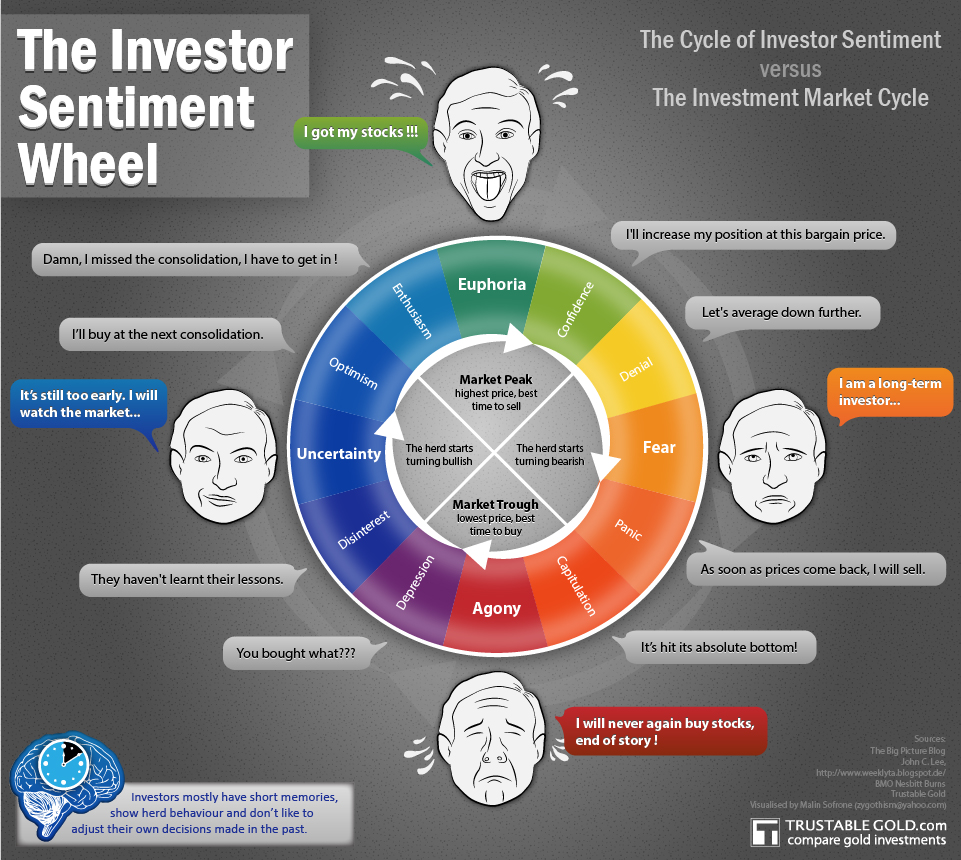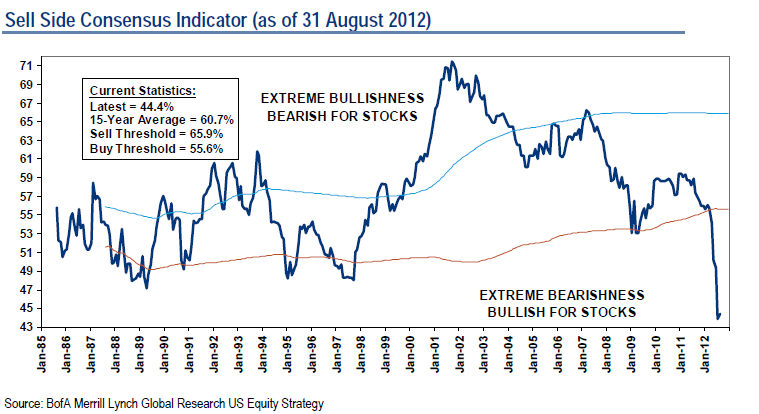We give up. We’re throwing in the towel and recommending everyone sell their managed futures investments and put it all in the stock market. Ok, not really, but can we really ignore this rally anymore. It is almost begging people to sell everything and get involved.
But would you recommend that to anybody in their right mind? Would anyone in their right mind do that? Given the internet bubble burst, financial crisis, flash crash, and so on; most people we talk to believe a 50% allocation to the stock market is heavy these days. Yet the market goes onwards and upwards.
Whether it is because of just this malaise towards stocks, or because of the hundreds of billions pumped into the U.S. system by Bernanke & Co. – the U.S. stock market has been the best thing going for investors since March of 2009.
While most of us were (smartly) preparing our portfolios for the next leg down in the crash, for the incredible volatility when China’s economy slowed, for the contagion in Europe when countries there started falling like dominoes – the U.S. stock market has laughed it off, returning to the highs attained before the financial crisis.
DISCLAIMER: PAST PERFORMANCES IS NOT NECESSARILY INDICATIVE OF FUTURE RESULTS. HERE AND THROUGHOUT THIS PIECE, US STOCKS = S&P 500 TOTAL RETURN, BONDS = CITIWORLD BOND INDEX, MANAGED FUTURES = DOW JONES CREDIT SUISSE BROAD MANAGED FUTURES SUBINDEX. FINANACIAL INDICES ARE IMPERFECT PROXIES FOR ASSET CLASS PERFORMANCE.
But, again, does anyone really trust these past 3.5 years? Does anyone really think the next 3.5 years will be that good for stocks?
Where do we go from here?
Most people we talk to sure don’t think this is a permanent up move in the stock market (perhaps in and of itself an argument for it to continue). The common thread is the thought that prices have just come too far too quickly since the 2009 bottom.
We decided to take a look at just how far that is – analyzing the S&P 500’s return since March 2009, or 43 months ago, versus all the previous 43 month periods back to the 1950s. You can see in the chart below that this rally is quickly becoming one of the most impressive of our time. But, you can also see that the last times we were up in this area were in Aug/Sep of 1987 (yeah, that 1987, the one where stocks lost 21% in a day), and in the summer of 1999, right before the internet bubble burst and the Nasdaq fell over -70%.

Does this mean doom is upon us and these levels signal a sharp sell off right around the corner? Not likely. The market could stay elevated at these levels for quite some time. Indeed, the S& P spent 15 out of 26 months at a rolling 43 month return of over 100% during 1997, 1998, and 1999. However, the differences between now and then are well documented. Then, we had an investor driven bubble in the midst of a growing economy and near full employment. Now, it's a government fueled bubble in the midst of a flat to shrinking economy with hefty unemployment.
Relative Performance
Most investors we talk to feel like they missed this stock rally. They tell us how it seemed to risky to get in at the lows in 2009, had come to far too fast to get in during 2010, looked like the world was ending in 2011, and how it would just be chasing at this point… after missing all the other entry points. While they weren’t plowing into stocks because of the perceived risks, many investors were adding protection to their portfolios in the form of non correlated alternative investments such as managed futures.
But this isn’t just about stock market performance, it is also about how managed futures have performed during the up move; and while the stock market was gaining back everything it lost and then some during the financial crisis – managed futures, generally speaking, were not keeping up on a relative basis.
We saw above that the S&P has outperformed the DJCS managed futures index by xxx% since March 2009 – but what is a normal amount of overperformance (after all, we should expect some outperformance of stocks on a pure return basis – given they are roughly 4 times as volatile as the managed futures index).
To explore this, we charted the cumulative return of the S&P 500 total return index with the DJCS managed futures index back to 1994 and highlighted the periods of maximum differences between the two.
You will see stocks running clear and away better than managed futures from 1994 through 1999, with a max difference in cumulative performance of 242% right before the internet bubble burst and managed futures clawed back the bulk of that difference.
From that crisis period, stocks again started their more aggressive rise, outpacing managed futures for 4.3 years from roughly 2003 through 2007 until peaking at a difference of 182% before the financial crisis hit and brought stocks all the way below managed futures on a cumulative basis since 1994.
DISCLAIMER: PAST PERFORMANCE IS NOT NECESSARILY INDICATIVE OF FUTURE RESULTS. FINANCIAL INDICES ARE IMPERFECT PROXIES FOR ASSET CLASSES.
Which brings us to the current 3.3 year run up period for stocks, where they have again pried open a significant spread over managed futures, being about 127% better right now than managed futures since 1994.
What do we see in all of this? A pattern of sorts, whereby U.S. stocks outperform managed futures for a 3 to 5 years, followed by a sharp downturn where managed futures catch up, followed by another "expansion" of the spread by stocks into another downturn/convergence, and so on. Ignoring the current period, the previous two saw an average stock expansion period of 4.8 years and an average max divergence of 212%.
Does that mean this current stock outperformance over managed futures has another 1.5 years and 80% to go? If that’s the case, then you may want to heed our sarcastic advice at the beginning of this piece and ditch your managed futures for a long stock portfolio.
Or does it mean stocks have put in the bulk of any outperformance over managed futures both in terms of cumulative return (130% out of 200%?) and time (3.3 out of 4.8 years) since the last cross over in performance, and a reversion to the mean is due? Remind us to give the real stock buy signal next time the stock and managed futures equity lines converge...
Or, lastly – does it mean nothing… (always a distinct possibility, but less fun to talk about) and both stocks and managed futures will continue to do what they do independent of one another?
The Managed Futures Seat Belt
Whatever it means, this boom time for stock investors and flat period for managed futures investors has caused more than a few investors to start asking some difficult questions (despite managed futures continuing to add to total assets under management and stock mutual funds continuing to bleed assets).
You see, the sale made to investors was, and the sale still made to this day; is something along the lines of, "You need managed futures in the portfolio to protect against another 2008 type environment. You need managed futures as a seat belt of sorts to protect against an accident."
Now, we’ve been as guilty as anyone at making that “seat belt” claim and espousing the benefits of managed futures during crisis periods such as 2008. But the thing is – the entire rest of the world is essentially setup to keep the markets from having such crisis periods. Just think of currency interventions, QE1-3, changes to accounting rules to mask bank losses, bans on short selling, and so on.
But, the question being asked more and more by those invested in managed futures and seeing the big underperformance of managed futures versus the stock market is a variation of, "What have you done for me lately?" Investors want to know what they're supposed to do in the space until the next big outperformance period comes along. They realized the need for protection against another crisis, but that crisis hasn’t come, and despite all apparent evidence to the contrary, still isn’t here. The question on many investors’ minds is what can this "seat belt" investment do for me when there is no crash imminent. Do I take it off and risk crashing through the windshield? Or maybe I just shift it around a little bit to make it more comfortable (likely lessening its safety profile a bit)?
In short, investors want the crisis period performance of managed futures – but they don’t want to just sit around during non-crisis times – they want returns during those times, too!
Crisis Period vs Absolute Returns
Nobody ever said clients have to have rational expectations. Sure, it helps people in our business if they do, but you can’t blame investors for wanting their cake and eat it, too. In this case, many investors are sick of waiting for the next crisis for performance out of their managed futures portfolio, and want some performance out of it now. They don’t care if the program they are invested in is the largest in the world with 100 phDs on staff and did great in 2008. Most would rather trade in that pedigree for performance in 2009 and here in 2012.
And there are plenty of programs which fit the bill, having done well historically and doing well during the past 3.5 years when stocks have outperformed the managed futures index. Give us a call to find out which programs our specialists have been recommending to some clients who are looking for performance in the non-crisis period, not just when another 2008 comes.
That is one important point to consider – all of the stats and discussion above centers around the imperfect managed futures index, which we believe to be a good snapshot of the asset class, but a snapshot nonetheless. The index is also comprised mainly of trend following and multi-strategy type programs which have the long volatility, crisis period performance profile most have come to expect out of managed futures.
Not represented meaningfully in the main managed futures indices are Ag traders, spread traders, short term CTAs, and specialty CTAs dealing exclusively in markets like meats or softs. And wouldn’t you know it – these are the type of programs which have, generally speaking, outperformed the managed futures indices since 2008. These are the types of programs not waiting for the next 2008 – they are giving it a go at earning a decent return right now, in 2012.
But like all things in life, such programs come with a cost, and the question we ask such customers looking at these alternative managed futures strategies… are you willing to forego some of the crisis period performance managed futures is known for in return for some "absolute returns." It isn’t always an either/or proposition, but more often than not – if you want returns during non crisis periods, you are less likely to get the positive returns in the crisis periods. That which makes money in crisis periods is less likely to also be able to make money when volatility is falling and there is no crisis.
So look yourself in the mirror and ask what you want out of your managed futures portfolio. Crisis period performance or Absolute Returns. Your answer may open up new opportunities for you to consider.
IMPORTANT RISK DISCLOSURE










